If you have bought a PC in recent years, in all probabilities you have a 64-bit version of Windows 11/10. Unlike 32-bit (x86) Windows installation that permitted the installation of only 32-bit programs, a 64-bit (x64) Windows 11/10 installation allows installing programs of both 32-bit and 64-bit architecture. Now, for enhancing your Windows experience for superior performance, users might want to determine if an installed program is a 32-bit or 64-bit type. Fortunately, figuring out if an installed application is 32-bit or 64-bit is easy.
The difference between 32-bit and 64-bit architecture
Windows currently come in two architectures, 32-bit and 64-bit. The major difference between the two is the amount of memory supported by them and the performance. 32-bit Windows and programs support the use of 3GB RAM, on the other hand, 64-bit Windows and programs support more than 4 GB of RAM and offer additional security benefits. Because of this, a 64-bit application on 64-bit Windows might run a little faster. Also, 64-bit Windows and programs are typically larger in size than 32-bit. Visit this post to know more about the difference between 32-bit and 64-bit Windows.
Upgrading 32-bit apps to 64-bit
Natively, a user cannot upgrade a 32-bit Windows installation to 64-bit. Similar is the case for applications, hence you will have to uninstall the 32-bit application and then install the 64-bit one, if available.
Read: How to tell if the Computer is running 32-Bit or 64-Bit Windows.
32-bit or 64-bit application – How to tell?
In this guide, we will take you through the different ways to determine whether the software or program that is installed on your Windows 11/10 system is 64-bit or 32-bit architecture. You can follow these methods to check whether the app is 64-bit or 32-bit.
- Using Task Manager
- Analyzing its Properties
- Using File Explorer
- Checking the About or Help menu
Let’s look at these methods in detail.
1) Check if an application is 32-bit or 64-bit Using Task Manager
1] Open the ‘Start’ menu and search for ‘Task Manager’. Then click the top result to open the app. Or try the fastest way to get there by using this keyboard shortcut – ‘Ctrl + Shift + Esc’.
2] Click the ‘Details’ tab.
3] Now right-click a column header and choose the ‘Select Columns’ option.
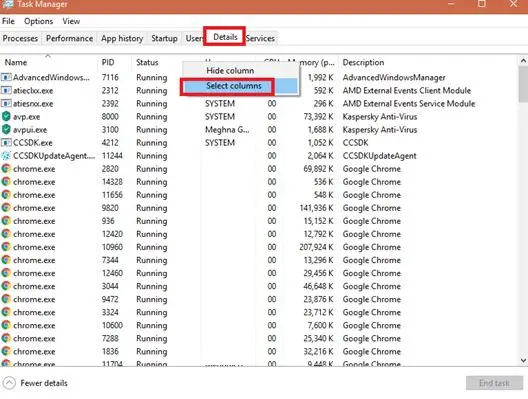
4] In the ‘Select Columns’ window check the ‘Platform’ option and hit the ‘OK’ button.
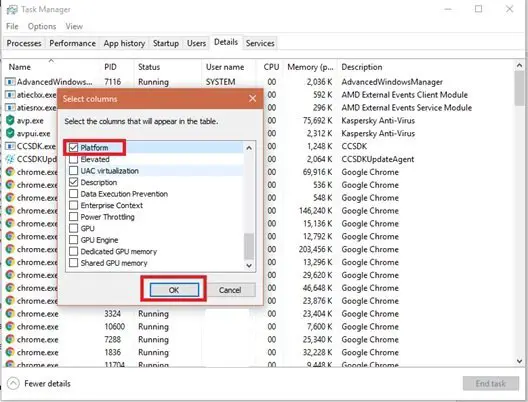
5] This action adds the platform column in the Task Manager, so you can confirm the 64-bit and 32-bit apps running on your computer. For each running application or process, this column tells you whether it is 32-bit or 64-bit.
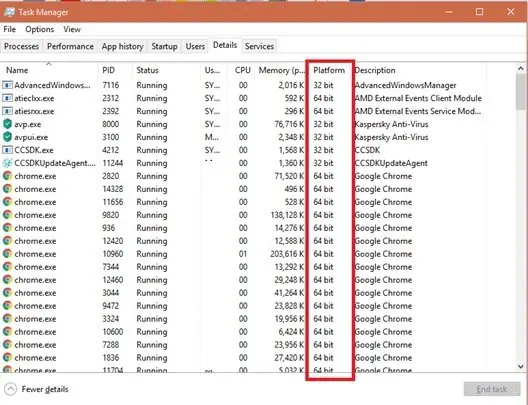
Once the above steps are completed, you will understand the architecture of the applications running on your system.
Read: Difference between Program Files (x86) and Program Files folders.
2) Check if an application is 64-bit or 32-bit, by analyzing its Properties
Another method that works great to check the architecture of an application is analyzing the properties of that program’s executable file. Follow these steps:
1] Locate the launcher file (*.exe) or one of its shortcuts.
2] Now right-click on it and select ‘Properties’
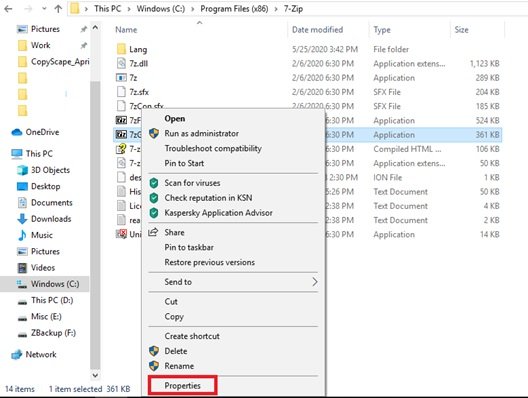
3] Go to the ‘Compatibility’ tab.
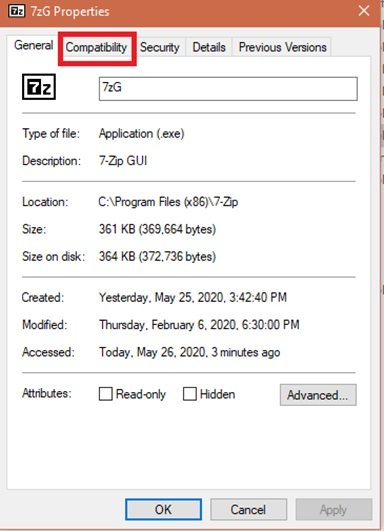
4] Now, check the “Run this program in compatibility mode for” box, and open the drop-down list. Note, if this drop-down list starts with Windows Vista, then the application you selected is a 64-bit application. If the list starts with Windows 95, then the application you selected is a 32-bit application.
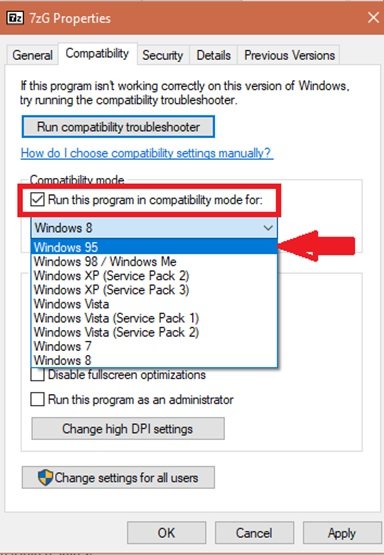
In this example, the list starts with Windows 95, so it is not a 64-bit application but a 32-bit one.
NOTE: Don’t apply the compatibility setting and close the ‘Properties’ window without making any changes.
3) Check if an application is 64-bit or 32-bit using File Explorer
You can follow these steps:
1] Go to the ‘File Explorer’
2] From the left navigation pane, click on ‘This PC’
3] Under the ‘Devices and drivers’ section, double-click the ‘Windows (C:)’ drive where Windows 10 is installed.
4] Confirm the 64-bit applications opening the Programs Files folder and the 32-bit applications opening the Programs Files (x86) folder.
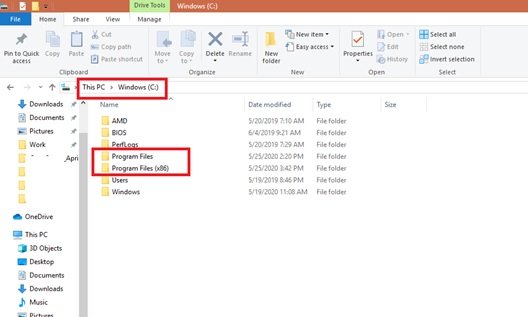
Normally, when an application or a program is installed on a Windows 10 system, it is in one of the following folders on C drive: Program Files or Program Files (x86).
64-bit applications are usually installed in the “C:\Program Files” folder, while 32-bit applications install themselves in the “C:\Program Files (x86)” folder.
But there are some exceptions to this rule. For instance, the 64-bit version of Google Chrome installs itself in the “C:\Program Files (x86)” folder. We could not find the reason for this exception, there are chances that you may encounter other 64-bit applications that do the same.
4) Check the About or Help menu
Few applications also state if they are 32-bit or 64-bit in their ‘About or Help’ menu. Google Chrome, for example, you can go to its ‘Settings Menu’ and click on ‘Help’ and then go to ‘About Google Chrome’. This opens a new tab that has the details of its version number and application architecture.
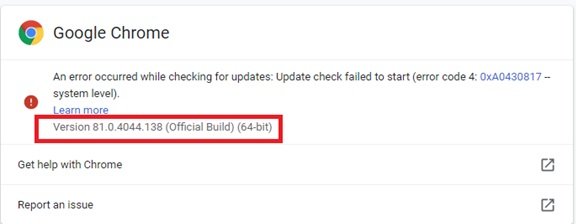
But this is not a very reliable solution as it is not a standard method from software developers to include this information in their applications. Also, currently, very few applications offer the app architecture into their About and Help info.
So, these are a few of the simplest methods that can be used to check if an application is 64-bit or 32-bit, without using any third-party tools. Do try them out and let us know which one worked for you. And, if you have other tricks, do not hesitate to share it with us in the comments section below.
Leave a Reply